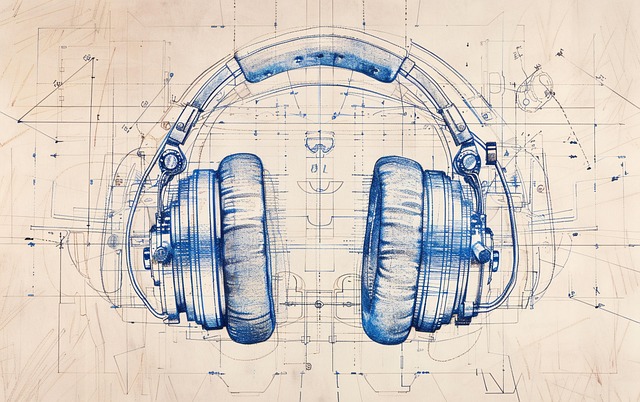Construction drawings, essential using CAD drafting for architecture, detail structural designs and specifications, enhancing accuracy and efficiency in building plans. They guide permit processes, contractor work, and code compliance, facilitating stakeholder communication and collaboration. During execution, CAD-generated blueprints are interpreted by skilled contractors to create structures that meet design, aesthetic, and safety standards through meticulous drafting and collaborative efforts.
In the realm of construction, understanding and accurately interpreting construction drawings is paramount. From securing permit approvals to seamless contractor execution, these visual blueprints serve as the cornerstone of any project. This article delves into the intricacies of construction drawings, exploring key components such as CAD drafting for architecture, effective communication between architects and contractors, and the critical execution phase where digital plans transform into tangible structures.
Understanding Construction Drawings: A Basis for Approvals
Construction drawings, a critical component in the building process, serve as detailed visual representations of a structure’s design and specifications. These drawings are not merely artistic renderings but essential tools for obtaining permit approvals from local authorities and guiding contractor execution. In the digital age, CAD drafting for architecture has become the standard, offering precision and efficiency over traditional manual methods.
Understanding these drawings is paramount for all stakeholders involved—from architects and engineers to contractors and regulators. Each line, symbol, and dimension conveys specific information about building elements, structural integrity, and compliance with local codes. This comprehensive visual language ensures that everyone interprets the design accurately, facilitating smoother approvals and more accurate on-site construction.
CAD Drafting: Architectural Precision for Permits
CAD drafting has become an indispensable tool in the architecture industry, revolutionizing the way design concepts are translated into precise technical drawings. This digital process offers unparalleled accuracy and efficiency when it comes to creating construction plans and securing permit approvals. With CAD software, architects can meticulously craft 2D and 3D models, ensuring every detail is captured with architectural precision.
The benefits of CAD drafting for architecture are numerous. It allows for easy modifications, quick updates, and precise measurements, all while maintaining the integrity of the design. This level of control ensures that the final drawings submitted for permit approval accurately represent the intended construction, minimizing delays and potential issues during execution. Moreover, digital drafting promotes collaboration among project stakeholders, enabling contractors to interpret the plans efficiently, leading to smoother construction processes.
Interpreting Plans: Communication Between Architects and Contractors
Construction drawings, created through meticulous CAD drafting for architecture, serve as critical communication tools between architects and contractors. These detailed plans convey structural elements, material specifications, and aesthetic considerations, ensuring a shared understanding of the project’s scope. Architects must clearly label and annotate drawings, providing concise instructions and references to relevant standards or code requirements.
Effective interpretation of these plans requires contractors to engage actively in the process. Regular meetings and open dialogue allow for clarifications, address potential discrepancies, and foster collaboration. By working together, architects and contractors can ensure precise execution, minimizing errors and delays during construction—ultimately contributing to a successful project delivery.
Execution Phase: Translating Digital to Physical Construction
During the execution phase, digital construction drawings created through CAD drafting for architecture come to life as physical structures. This transformation involves meticulous translation from two-dimensional plans and specifications into three-dimensional reality. Skilled contractors interpret the precise measurements, dimensions, and details in these drawings, utilizing specialized equipment and techniques to build according to design intent.
Effective communication between architects, engineers, and contractors is vital during this stage. Clear interpretation of CAD drawings ensures structural integrity, aesthetic accuracy, and adherence to building codes. By bridging the digital and physical worlds, successful execution relies on precise drafting, detailed specifications, and collaborative efforts among all stakeholders involved in the construction process.
Construction drawings, a critical aspect of the building process, serve as a bridge between design concepts and physical structures. Through meticulous CAD drafting for architecture, these visual guides ensure precision and clarity in communication between architects and contractors. By understanding and interpreting plans effectively, the execution phase seamlessly translates digital designs into tangible buildings, streamlining permit approvals and enhancing overall project efficiency.
